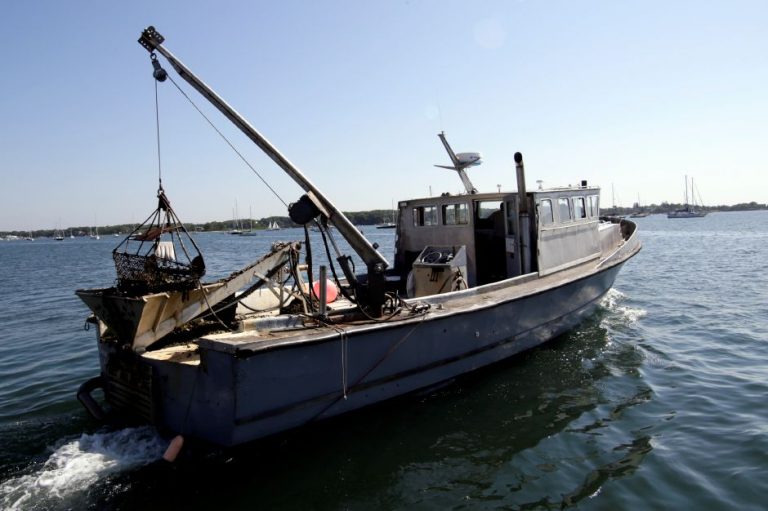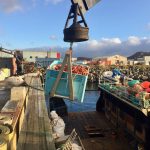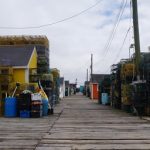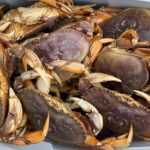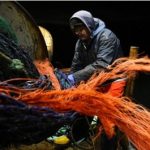Tag Archives: Bonneville Dam
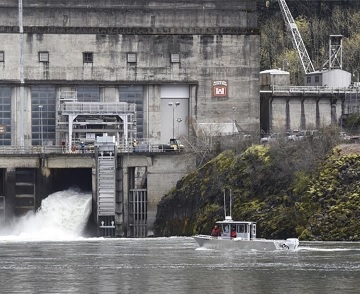
Sea lions threaten Northwest’s salmon – Pinnipeds eating thousands of at-risk fish in Columbia River
Decadeslong efforts by state and tribal agencies have slowly curbed sea lion populations in the region, yet officials still consider the pinnipeds a threat to at-risk salmon populations in the Columbia River. Between August 2021 and May 2022, officials estimate, more than 7,000 fish in the Bonneville Dam tailrace were killed by Columbia River sea lions, according to the Portland U.S. Army Corps of Engineers’ 2022 predation report. This totals about 12.4% of the salmon run accounted for during the agency’s observation period. Dozens of sea lions congregate at the dam in the fall, winter and spring. They feast on chinook, steelhead and coho salmon, as well as sturgeon and other fish. Spring chinook salmon were disproportionately affected, accounting for roughly 4,400 of the 7,000 fish killed. >click to read< 07:55
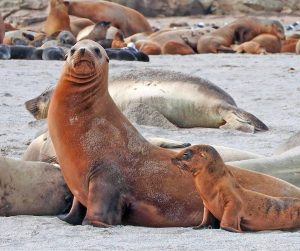
Cull! Plan Mulls Killing More Sea Lions to Save Salmon
Decades of efforts, including billions of dollars spent, to prevent the extinction of 13 species of Columbia River salmon and steelhead were stymied by the resurgence of gregarious mammals who themselves returned from the brink. Now, a new plan backed by Native American tribes and three states would attempt to protect the fish by killing more sea lions. >click to read< 08:54
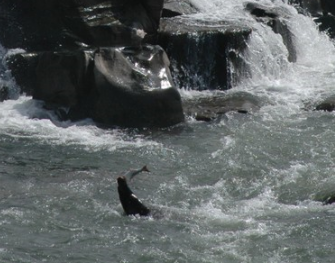
Oregon seeking expanded sea lion controls following success of salmon protections at Willamette Falls, Bonneville Dam
Having fended off the threat of extinction of wild winter steelhead over Willamette Falls, Oregon biologists are now joining counterparts in Washington, Idaho and Native American tribes to expand that success. Tuesday is the deadline set by the National Marine Fisheries Service for comments on a state and tribal proposal to reduce protections for both California and Steller sea lions in the Columbia river and its tributaries…. Send comments to: https://www.regulations.gov/docket?D=NOAA-NMFS-2019-0073, or mail them to the National Marine Fisheries Service, ATTN: Protected Resources Division, NOAA-NMFS-2019-0073; 1201 NE Lloyd Blvd., Suite 1100; Portland, Ore., 97232. >click to read< 11:52
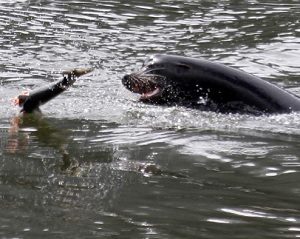
Proposal would kill more sea lions to protect fish
More than 1,100 sea lions could be killed annually along a stretch of the Columbia River on the Oregon-Washington border to boost faltering populations of salmon and steelhead, federal officials said Friday. The National Marine Fisheries Service said it’s taking public comments through Oct. 29 on the plan requested by Idaho, Oregon, Washington, and Native American tribes. The agency says billions of dollars on habitat restoration, fish passage at dams and other efforts have been spent in the three states in the last several decades to save 13 species of Columbia Basin salmon and steelhead protected under the Endangered Species Act. >click to read< 13:43
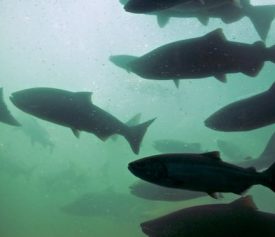
Opinion: Why Bonneville can’t save salmon
The Northwest is not winning the battle to save wild salmon and steelhead in the Columbia River. Although most of the 12 listed salmonid stocks in the basin demonstrated a weak upward trend for a couple decades, that progress has stalled. Total returns of salmon and steelhead passing Bonneville Dam last year slipped to the second-lowest level in the past 18 years, and spring Chinook returns were 60 percent of the 10-year average. by Tom Karier >click to read<10:34
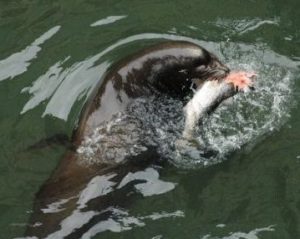
Salmon-eating sea lions targeted at Columbia River dam
More California sea lions preying on imperiled salmon in the Columbia River below a hydroelectric project on the Oregon-Washington border are being killed under a revised policy, federal authorities said Friday. The National Marine Fisheries Service made public reduced criteria for removing sea lions at Bonneville Dam about 145 miles (235 kilometers) from the Pacific Ocean. The new guidelines that went into effect April 17 permit any California sea lion seen in the area on five occasions or seen eating a fish to be put on a list for lethal removal. >click to read<10:57
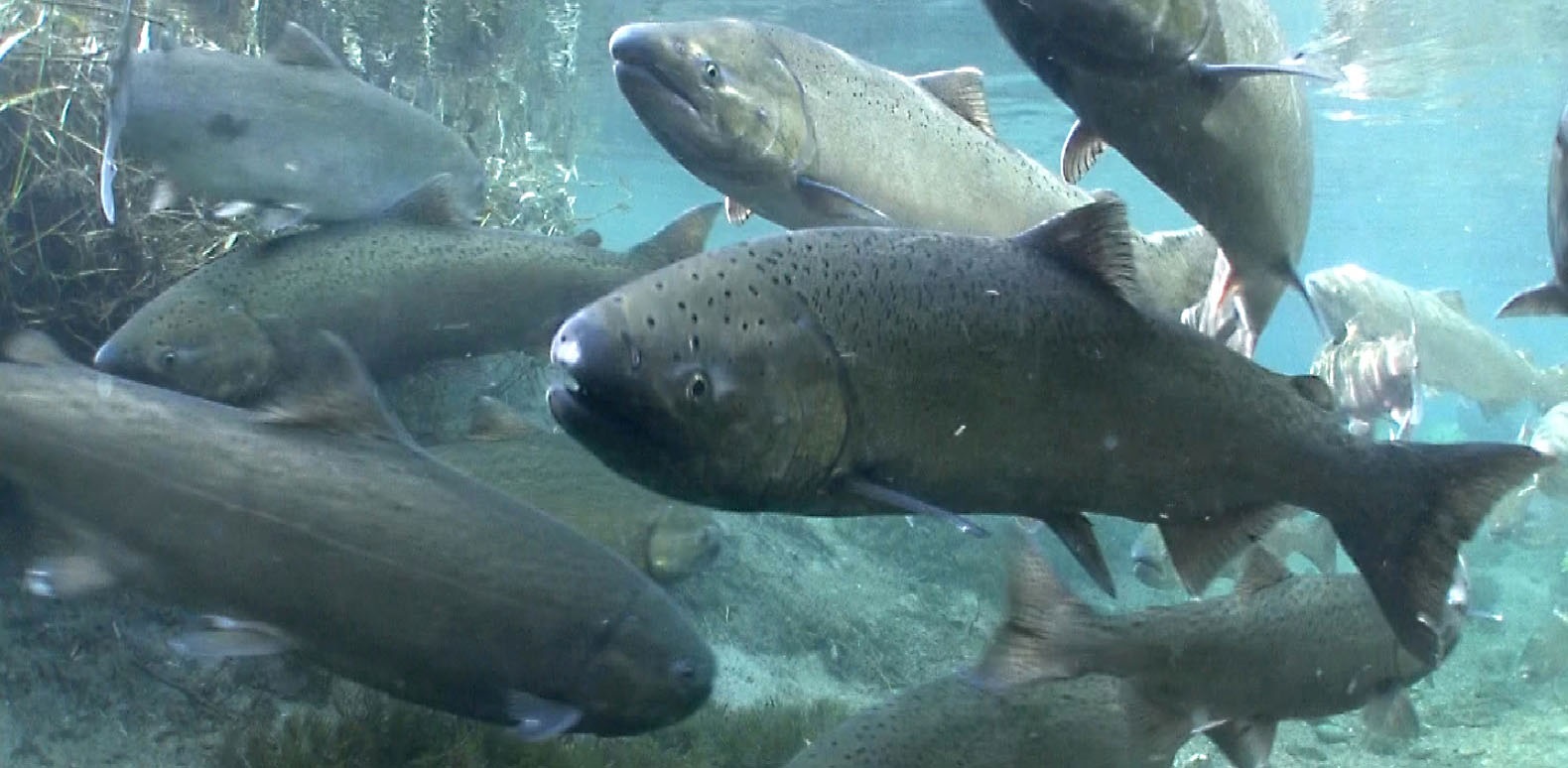
Dismal Columbia River salmon forecast may trigger emergency fishing restrictions
Fishery managers in Washington and Oregon are concerned the spring and summer chinook salmons runs on the Columbia River are going to be one of the lowest on record. And the state agencies are calling for a meeting next week to consider emergency restrictions on commercial and recreational fishing along parts of the river. By Friday morning, 189 adult salmon had crossed over Bonneville Dam. That’s less than 8 percent of the 10-year average of 2,392 fish for the same date. >click to read<09:24
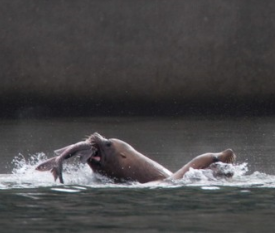
New sea lion wrinkle in the Willamette River threatens sturgeon
Oregon biologists attempting to save the Willamette River’s sharply declined winter steelhead run are facing a new twist in their vexing battle against fish-hungry sea lions at Willamette Falls. The river has seen an unusual influx this winter of large, sturgeon-eating Steller sea lions. Anglers from the falls to the Portland harbor report watching the carnage. “Sturgeon are on our radar,” said Shaun Clements of the Oregon Department of Fish and Wildlife. “We have seen up to 10 Steller sea lions at the falls, which is more than typical.” >click to read<18:24
Herrera Beutler: To save steelhead, we must cut sea lion numbers
 Steelhead, longtime residents in our rivers here in the Pacific Northwest, are now approaching extinction with alarming speed. This isn’t exaggeration; the Oregon Department of Fish and Wildlife found that one population of steelhead has an 89 percent chance of becoming extinct in the not too distant future. The culprit for the fish’s demise? Sea lions. Experts are pointing to the increased population of California sea lions as the biggest threat. The sea lions gather in locations where steelhead and salmon are the most vulnerable, like below the Willamette Falls or the Bonneville Dam, where these native fish species congregate before heading upstream to spawn. An alarmingly low number of native steelhead — just 512 — made it over Willamette Falls this year. click here to read the story 10:01
Steelhead, longtime residents in our rivers here in the Pacific Northwest, are now approaching extinction with alarming speed. This isn’t exaggeration; the Oregon Department of Fish and Wildlife found that one population of steelhead has an 89 percent chance of becoming extinct in the not too distant future. The culprit for the fish’s demise? Sea lions. Experts are pointing to the increased population of California sea lions as the biggest threat. The sea lions gather in locations where steelhead and salmon are the most vulnerable, like below the Willamette Falls or the Bonneville Dam, where these native fish species congregate before heading upstream to spawn. An alarmingly low number of native steelhead — just 512 — made it over Willamette Falls this year. click here to read the story 10:01
Oregon, Washington and tribes again take aim at sea lions in dispute over salmon
 Congress is once again considering giving Oregon and Washington fish and wildlife officials and regional tribes broader authority to kill sea lions below the Bonneville Dam, an effort supporters say is necessary to protect 13 endangered species of salmon and steelhead. But unlike previous attempts to rein in the marine mammals, which are protected under federal law, the legislation goes beyond killing the dozens that converge each spring on the fish logjam at the Columbia River dam 145 miles from the Pacific Ocean. The bipartisan team behind the bill — Reps. Jaime Herrera-Beutler, R-Washington, and Kurt Schrader, D-Oregon — want to go much further. They also want to make it easier to kill California sea lions found on the Willamette River and its tributaries, and anywhere on the Columbia River east of Interstate 205. If the legislation is approved, as many as 920 sea lions could be killed annually, compared with 92 under current law. click here to read the story 08:54
Congress is once again considering giving Oregon and Washington fish and wildlife officials and regional tribes broader authority to kill sea lions below the Bonneville Dam, an effort supporters say is necessary to protect 13 endangered species of salmon and steelhead. But unlike previous attempts to rein in the marine mammals, which are protected under federal law, the legislation goes beyond killing the dozens that converge each spring on the fish logjam at the Columbia River dam 145 miles from the Pacific Ocean. The bipartisan team behind the bill — Reps. Jaime Herrera-Beutler, R-Washington, and Kurt Schrader, D-Oregon — want to go much further. They also want to make it easier to kill California sea lions found on the Willamette River and its tributaries, and anywhere on the Columbia River east of Interstate 205. If the legislation is approved, as many as 920 sea lions could be killed annually, compared with 92 under current law. click here to read the story 08:54
Bad salmon run hints at trouble ahead
 Count backward three years and we come to 2014 — precursor to this spring’s extremely poor salmon returns. Fewer than 20,000 adult spring Chinook and about 1,500 immature jacks have been counted at Bonneville Dam, compared to 10-year averages of about 127,000 and 17,000. Shad, another species that should begin surging toward inland spawning grounds about now, reached a count of 26 at Bonneville late last week, compared to the 10-year average of more than 11,000. In the case of Chinook, actual returns may not be quite so bleak as the dam count indicates. Heavy mountain runoff has made the Columbia’s water cloudy and cold. Test fisheries found quite a few Chinook loitering here in the estuary, delaying their swim upstream. But with the start of summer only a month away, there isn’t much time left for the spring run to come through. If they don’t make it to spawning grounds, the run three years from now also will be weak. click here to read the op-ed 09:36
Count backward three years and we come to 2014 — precursor to this spring’s extremely poor salmon returns. Fewer than 20,000 adult spring Chinook and about 1,500 immature jacks have been counted at Bonneville Dam, compared to 10-year averages of about 127,000 and 17,000. Shad, another species that should begin surging toward inland spawning grounds about now, reached a count of 26 at Bonneville late last week, compared to the 10-year average of more than 11,000. In the case of Chinook, actual returns may not be quite so bleak as the dam count indicates. Heavy mountain runoff has made the Columbia’s water cloudy and cold. Test fisheries found quite a few Chinook loitering here in the estuary, delaying their swim upstream. But with the start of summer only a month away, there isn’t much time left for the spring run to come through. If they don’t make it to spawning grounds, the run three years from now also will be weak. click here to read the op-ed 09:36
Sea lions hinder salmon conservation
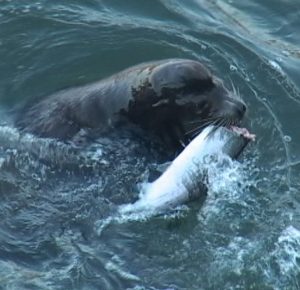 California and Steller sea lions took a bigger bite out of last year’s salmon run than in any previous year, according to a new federal report. 2015 saw a bigger run, with more than 239,000 chinook and steelhead migrating past Bonneville Dam. That year, the total number of salmon that sea lions ate was he largest ever recorded. The Army Corps of Engineers recorded more than 260 sea lions eating more than 10,000 fish from January to June 2015. The 2016 salmon run was far smaller, but the sea lions’ appetite for salmon didn’t shrink much. They still ate more than 9,500 fish, nearly 6 percent of the run. That’s the largest share of the run eaten by the large marine mammals since Army Corps scientists started watching 15 years ago. Read the rest here 12:43
California and Steller sea lions took a bigger bite out of last year’s salmon run than in any previous year, according to a new federal report. 2015 saw a bigger run, with more than 239,000 chinook and steelhead migrating past Bonneville Dam. That year, the total number of salmon that sea lions ate was he largest ever recorded. The Army Corps of Engineers recorded more than 260 sea lions eating more than 10,000 fish from January to June 2015. The 2016 salmon run was far smaller, but the sea lions’ appetite for salmon didn’t shrink much. They still ate more than 9,500 fish, nearly 6 percent of the run. That’s the largest share of the run eaten by the large marine mammals since Army Corps scientists started watching 15 years ago. Read the rest here 12:43
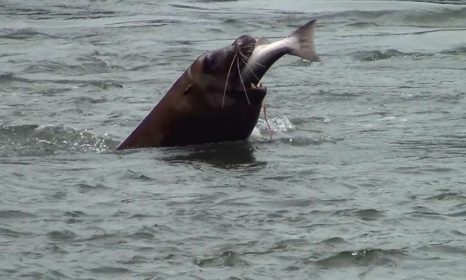
Early action key to reducing sea lion impacts on Bonneville Dam salmon
A new study used the same kind of models that scientists use to track disease to instead examine how some California sea lions have learned to prey on salmon gathering to ascend fish ladders at Bonneville Dam. Although sea lions commonly feast on fish, their predation on salmon at Bonneville Dam on the Columbia River poses wildlife management challenges. The sea lions that gather on the Columbia each spring are protected by the Marine Mammal Protection Act while the salmon they are eating are protected by the Endangered Species Act. In 2008 NOAA Fisheries authorized Oregon, Washington and Idaho wildlife authorities to begin trapping and removing sea lions shown to repeatedly prey on salmon at the dam. The removal program was designed to reduce impacts on protected salmon. Read the rest here 20:04
Saving the Salmon – 38 sea lions killed near Bonneville Dam this year
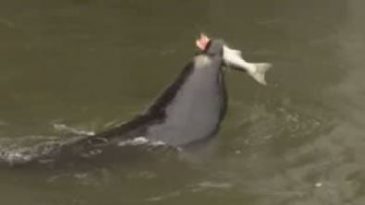 Wildlife workers from Oregon and Washington have killed 38 California sea lions at Bonneville Dam this year. That’s the most in any single year since getting approval from NMFS in 2008. NOAA spokesman Michael Milstein says it appears the program is working. “These are the fish that a lot of people are working really hard to save by improving habitat and making improvements at the dam and we don’t want to lose ground by having them be eaten by sea lions on their way back to spawn,” he said. The authorization to kill the animals runs out in June of 2016. Oregon and Washington have asked for another five years. NMFS is expected to decide in June or July. Video Read the rest here 08:09
Wildlife workers from Oregon and Washington have killed 38 California sea lions at Bonneville Dam this year. That’s the most in any single year since getting approval from NMFS in 2008. NOAA spokesman Michael Milstein says it appears the program is working. “These are the fish that a lot of people are working really hard to save by improving habitat and making improvements at the dam and we don’t want to lose ground by having them be eaten by sea lions on their way back to spawn,” he said. The authorization to kill the animals runs out in June of 2016. Oregon and Washington have asked for another five years. NMFS is expected to decide in June or July. Video Read the rest here 08:09
Lower river spring Chinook fishing on hold until run update; Bonneville Dam counts building
With catch limits near, planned commercial fisheries targeting spring Chinook salmon in so-called “select areas” in the lower Columbia River estuary were rescinded and/or trimmed back in decisions made this week by Oregon and Washington. dalleschronile.com Read more here 16:21
The Army Corps of Engineers created a “pollution crisis” on the Columbia River – Greens Call Bonneville Dam Cancerous Polluter
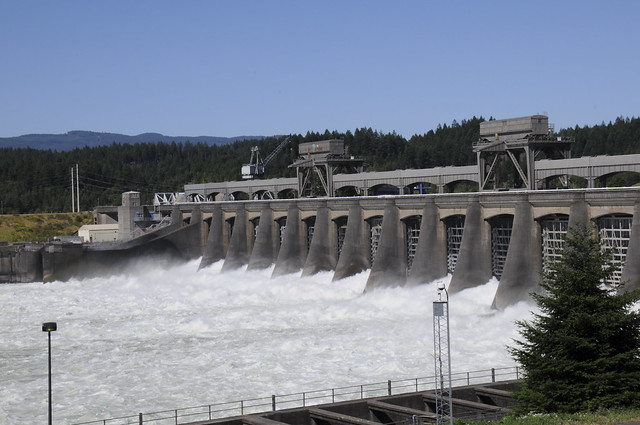
“The Columbia River is one of the West’s great river systems. This river supports rich fishing traditions, provides water for communities and agriculture, recreation opportunities, and power for hydroelectric dams. The river is also severely degraded by pollution. Toxic pollution threatens the health of people that eat local fish and jeopardizes the public’s right to eat fish caught locally. Rising water temperatures also threaten the health of salmon and other aquatic life that relies on cool water for survival,” the complaint states. @courthousenews
Tracy Warner — Salmon return; so do sea lions
 The annual arrival of the salmon is soon followed by the sighting of the first California sea lion, followed soon by the first photographers snapping shots of indiscriminate predators making meals of the world’s most valuable fish. Lawyers soon follow, being the dominant species. Read more
The annual arrival of the salmon is soon followed by the sighting of the first California sea lion, followed soon by the first photographers snapping shots of indiscriminate predators making meals of the world’s most valuable fish. Lawyers soon follow, being the dominant species. Read more




































